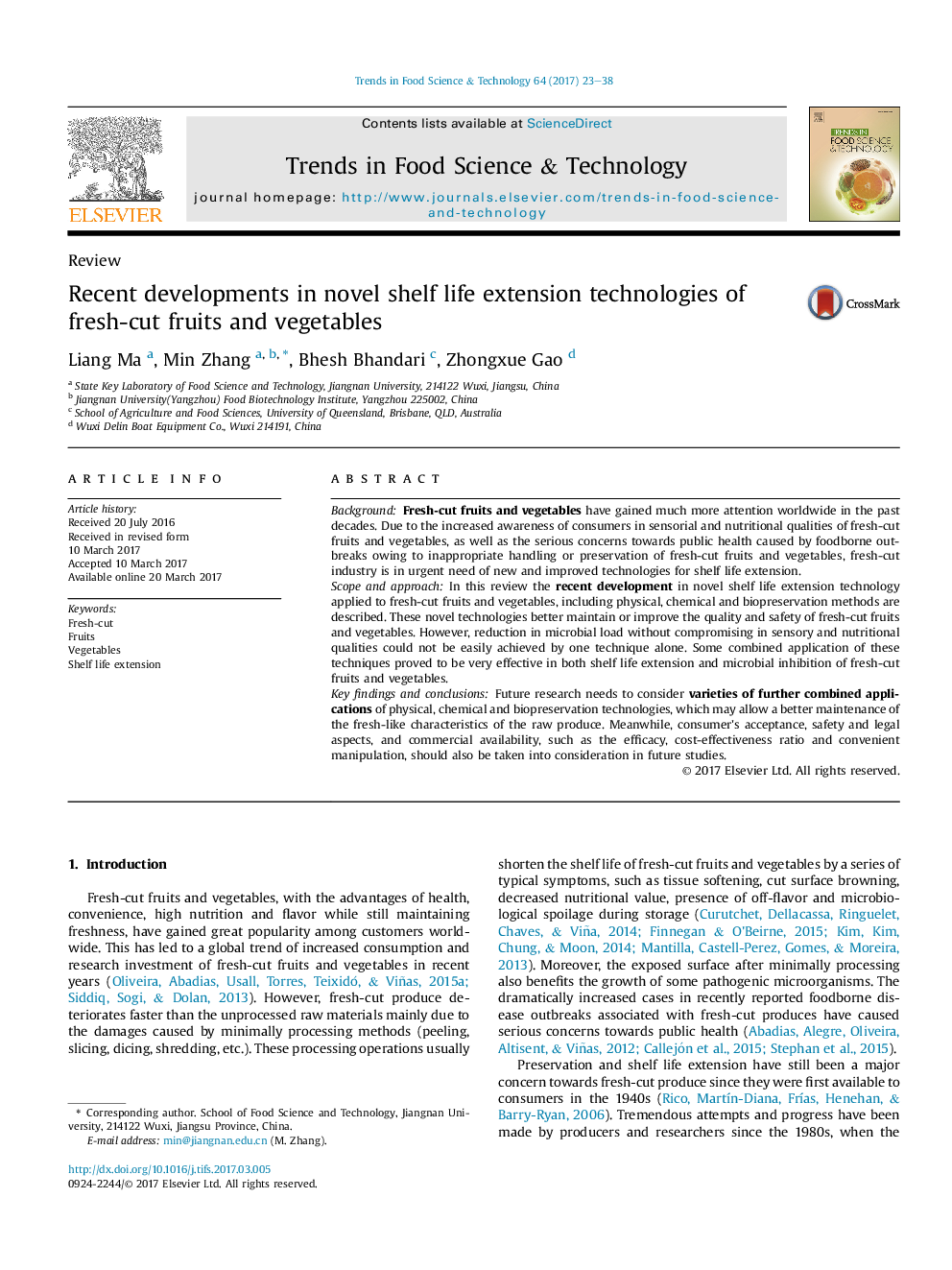| Article ID | Journal | Published Year | Pages | File Type |
|---|---|---|---|---|
| 5523773 | Trends in Food Science & Technology | 2017 | 16 Pages |
â¢Recent developments in novel shelf life extension technologies applied for fresh-cut fruits and vegetables are reviewed.â¢Characteristics of novel shelf life extension technologies methods are discussed briefly.â¢Novel methods are presented in the following order: physical, chemical and biopreservation technologies.â¢Non-thermal, synthetic additive-free or natural additive-based preservation techniques are presented.
BackgroundFresh-cut fruits and vegetables have gained much more attention worldwide in the past decades. Due to the increased awareness of consumers in sensorial and nutritional qualities of fresh-cut fruits and vegetables, as well as the serious concerns towards public health caused by foodborne outbreaks owing to inappropriate handling or preservation of fresh-cut fruits and vegetables, fresh-cut industry is in urgent need of new and improved technologies for shelf life extension.Scope and approachIn this review the recent development in novel shelf life extension technology applied to fresh-cut fruits and vegetables, including physical, chemical and biopreservation methods are described. These novel technologies better maintain or improve the quality and safety of fresh-cut fruits and vegetables. However, reduction in microbial load without compromising in sensory and nutritional qualities could not be easily achieved by one technique alone. Some combined application of these techniques proved to be very effective in both shelf life extension and microbial inhibition of fresh-cut fruits and vegetables.Key findings and conclusionsFuture research needs to consider varieties of further combined applications of physical, chemical and biopreservation technologies, which may allow a better maintenance of the fresh-like characteristics of the raw produce. Meanwhile, consumer's acceptance, safety and legal aspects, and commercial availability, such as the efficacy, cost-effectiveness ratio and convenient manipulation, should also be taken into consideration in future studies.
